Bangkok has some of the worst traffic in the world, but improved public transportation has made it much easier to get around the city. The above-ground trains (the BTS Skytrain) and the underground metro (the MRT) run from 6am to midnight, and although they don’t have the most convenient connections and require separate tickets, are the best ways to reach the central and modern parts of town.
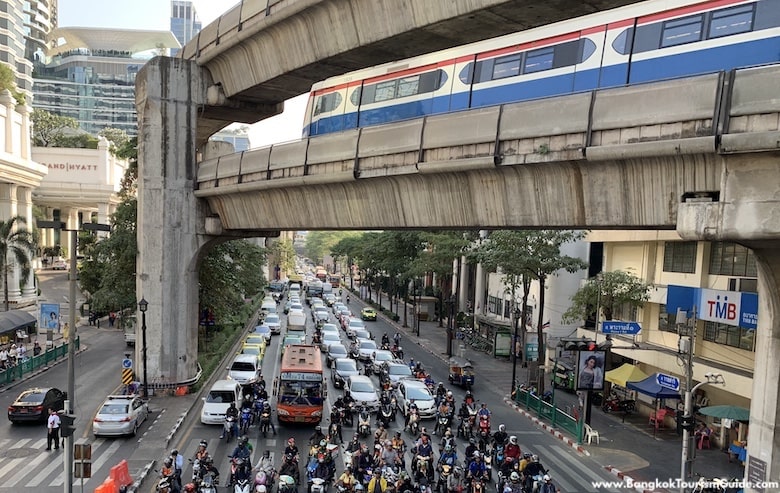
The BTS Skytrain above Bangkok's heavy traffic
Connecting from/to the BTS from/to the MRT involves some walking, as you have to exit one station and look for the other. The connection stations are:
BTS Asok - MRT Sukhumvit
BTS Sala Daeng - MRT Si Lom
BTS Mo Chit - MRT Chatuchak
In the old city, by the river, tourists and locals use the traditional (time-consuming) boats, tuk tuks and taxis.
BTS Skytrain
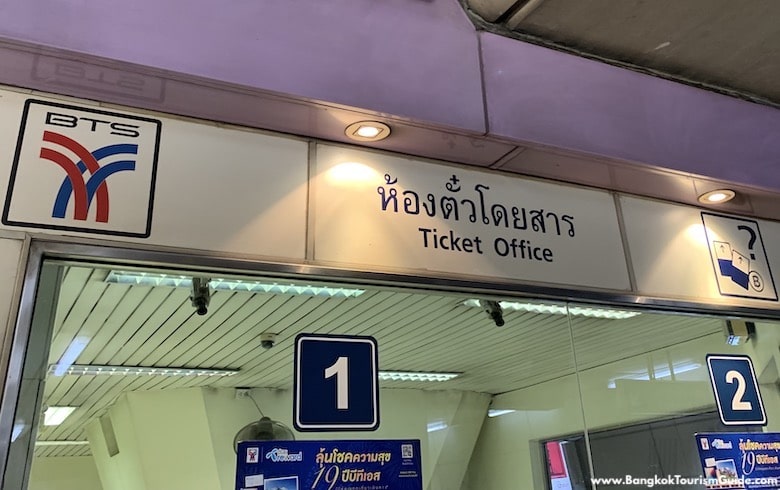
This clean, safe, fast, air-conditioned, and relatively cheap overground train service is the best way to reach many of the major sites downtown. Unfortunately, although it’s been in operation since 1999, it doesn’t yet cover the whole city, like the old town (Rattanakosin) or the popular Khao San Road.
It has two lines, linking at Siam station, with trains arriving every 3 to 6 minutes, between 6:30am and midnight.
Fares depend on the distance, and the magnetic fare cards can be purchased at all stations. Most ticket machines only take coins, but there are also ticket booths at most stations.
There are single-journey tickets and one-day passes -- if you’re staying downtown and plan on using it several times in one day, the pass is the better option, as it allows unlimited travel.
Signs and announcements are in English as well as Thai, so tourists have no trouble using it.
MRT Metro Trains
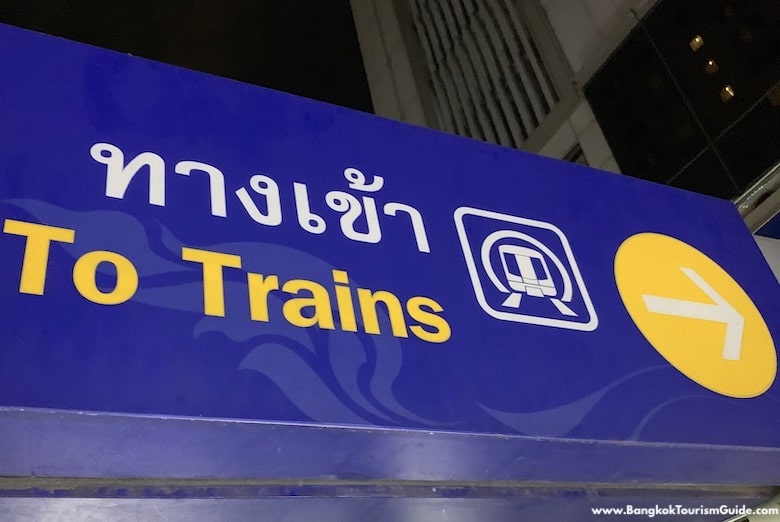
Operating since 2004, the MRT (Mass Rapid Transit) was Bangkok’s second mass transit system and is still expanding. It’s the underground train service, with three stations connecting with the overground BTS Skytrain (see intro above). It’s convenient for those staying in the modern part of town, and who want to reach Chinatown and the Old City. It also connects to the city’s central train station, at Hua Lamphong. Trains run every 4 to 10 minutes, from 6am to midnight.
Chao Phraya Express and Tourist Hop-On-Hop-Off Boats
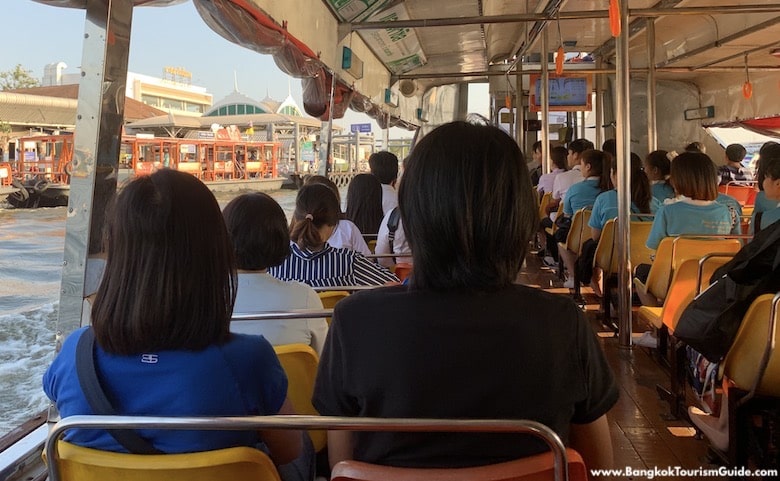
You’ll see different types of boats on the Chao Phraya River -- the long-tail “river taxis,” hotel shuttles, private river cruises, and traditional canal boats. The Chao Phraya Express is the traditional boat service most used by locals to reach the Old City. It operates between 6am and 7pm, stopping at the different piers about every 10 minutes at rush hours, and about every 20 minutes throughout the day. It’s also used by many tourists, on their way to the most historic sites on the riverside. Tickets can be purchased on board, but it’s best to get them at the counter at the pier.
The most useful boats for locals are those with the orange flag, as they’re the most frequent and stop at almost every pier, but tourists are better served by the blue flag boats, which they can hop on and off at the main sightseeing piers -- you can get your tickets here: Unlimited Hop Chao Phraya River All Day All Night Pass
If you’re staying downtown or in any other area away from the river, and want to take any of these boats, head to the Saphan Taksin station of the BTS Skytrain, where you’ll find the Sathorn pier (or “Central Pier”) directly in front. Hold on to your ticket as proof of purchase.
Although it may seem like a slower way to get around, considering the traffic in central Bangkok, you often reach your destination by boat in half the time you would in a taxi.
Taxi
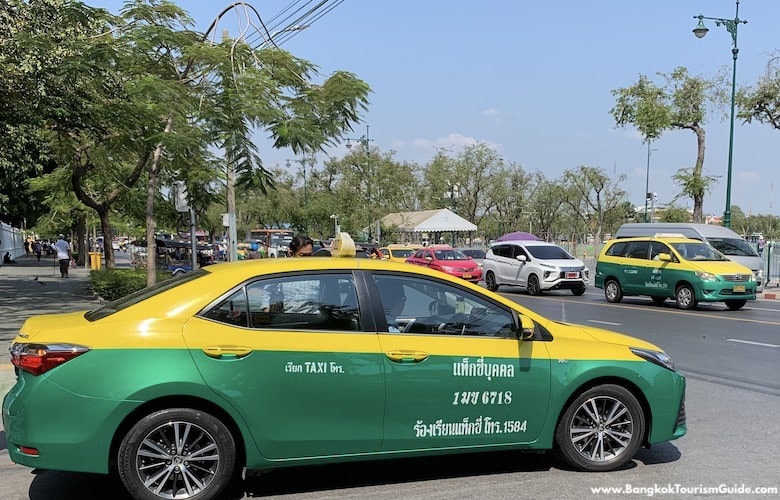
Taxis are plentiful and inexpensive, but avoid them at peak hours and make sure your driver turns on his meter. Many drivers (illegally) try not to do so, and offer an inflated flat fare instead. In that case, refuse the service and look for another. Those waiting by the Grand Palace, on Khao San Road, and outside the big hotels are least likely to use the meter.
In general, cars are new and comfortable, and the drivers are courteous (but speak little English). To most places within the city, you shouldn’t pay more than 100 or 150 baht (less than 5 US dollars/4 British pounds or euros). Freeway tolls are paid by the passenger.
Tipping is not really a common practice, but you may always round up to the nearest 5 or 10 baht.
Ridesharing
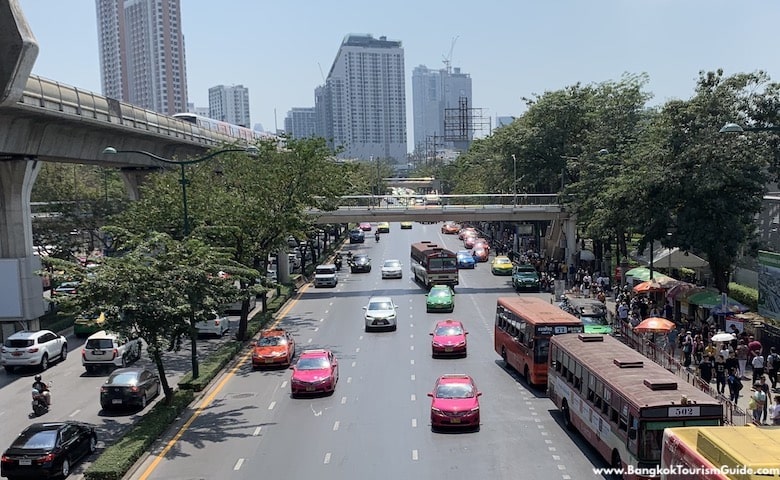
Uber no longer operates in Thailand, but you may use the ridesharing service Grab. It works exactly the same, and although it may be slightly more expensive than a regular taxi, it’s still much cheaper than similar journeys in the US or Europe. It can be quite a lifesaver when there are no taxis around, and you avoid the problem of attempting to communicate with a taxi driver who doesn’t speak much English or doesn’t want to turn on the meter. You also know exactly how much you’ll pay for, and don’t have to worry about overcharging.
Buses
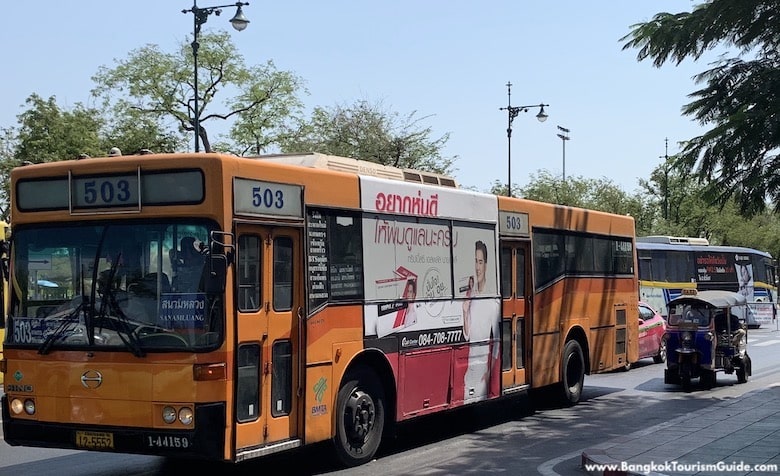
We don’t recommend taking buses in Bangkok, as they’re cheap but slow and confusing. And although there are now modern vehicles, many are old, noisy and dirty, and lack air conditioning. If you’re determined to have such an experience, know that bus lines run between 5am and 11pm. Tickets are bought on board, and to let the driver know you want to get off, stand up and approach the door.
Tuk Tuk
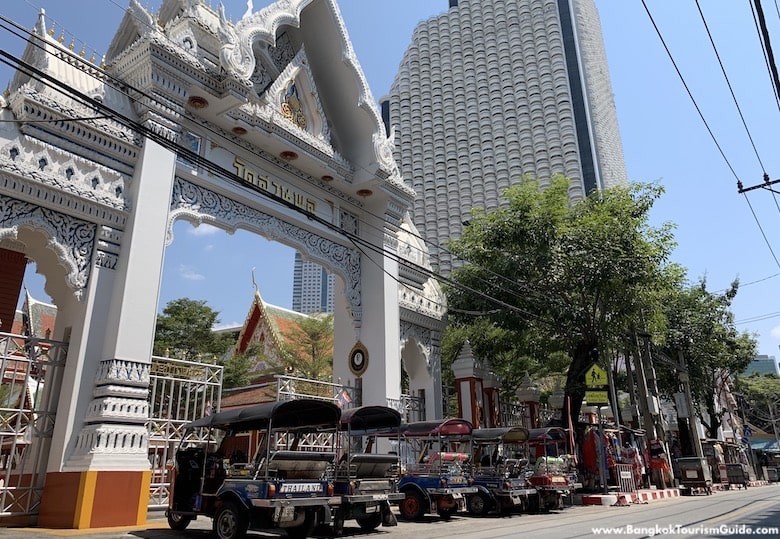
If you just want to get to the end of a long street or need to reach the other side of a neighborhood, take a tuk tuk. These noisy three-wheeled vehicles are often hard to resist, but drivers sometimes trap tourists into stopping at tailor or gem shops (that pay them commissions). Refuse any unrequested stops. The price is negotiated in advance, and is often not particularly cheap. If it’s just too unbelievably cheap, you’ll be taken on that “sightseeing” tour with stops at the gemstone dealers and tailors. They usually take as many as three people.
Motorcycle Taxis
They’re a quick and cheap way to travel short distances in Bangkok, but only for the most adventurous who don’t mind near-death experiences. You’ll see them down most side streets, with drivers wearing orange vests (some also wear green or purple vests). If yours doesn’t provide a helmet, find another who does. The prices for short rides are fixed, but you’ll have to negotiate for longer distances.
On Foot
Bangkok isn’t a walkers’ city. It’s hot, humid, and polluted, so it’s best to take local transport between sights. The exceptions are Chinatown and the area around the Grand Palace, which have several attractions within walking distance. In Siam and Ratchaprasong, elevated walkways connect major shopping malls and BTS Skytrain stations, making it easier to go between hotels and different attractions in the area on foot.
Airport Links - Transportation to and from the center of Bangkok
To know how to go from/to Bangkok's Suvarnabhumi International and Don Muang airports, see the Bangkok Airports Transportation Guide.

